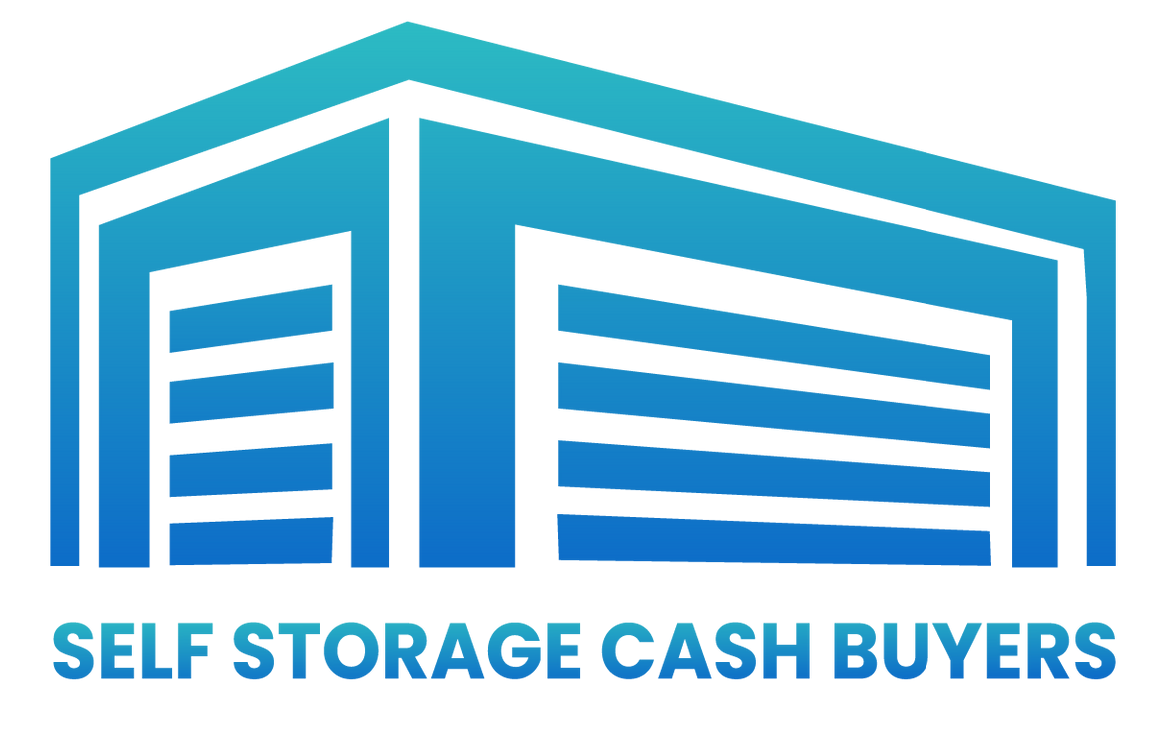Call Us Now:
How to Make Money With Self-Storage Investing
Published on December 14, 2023
Free Offer Form
We will get back to you as soon as possible.
Please try again later.
Self-storage investing is a way to make money by owning and renting out rental spaces where individuals and businesses can store their belongings.
Due to its resilience, stable cash flow, and low upkeep and overhead, this investment opportunity is gaining popularity.
For beginners, buying and improving an existing self-storage facility is a smart way to start, but it's important to be aware of the risk factors involved, too.
Self-storage investing embodies the adage
"Don't work for money—let money work for you" in several ways. Keep reading so you don't miss out!
Why Investing in Self-Storage Facilities?
Real estate investing, whether through self-storage REITs (Real Estate Investment Trusts) or your own facility, is gaining popularity as more people seek out storage units.
It's ideal, especially for passive investors, because the profitability of self-storage businesses is almost guaranteed thanks to their recession resilience, stable cash flow, and low operating costs.
Recession-Resilient Investment
Self-storage investments are recession-resistant due to their high demand for occupancy, low costs, and flexible rental terms.
So even during recessions or when people and businesses downsize or face financial challenges, the demand for storage units grows as the aforementioned potential customers need a place for their belongings.
In fact, some experts believe that self-storage demand may even increase during an economic downturn.
REJournals reported that during the COVID-19 pandemic, many real estate types, even once-stable ones, suffered significant losses—but not self-storage businesses.
Stable Cash Flow
Self-storage facilities offer a steady stream of cash flow through their month-to-month leases.
This reduces the risk of vacancies compared to other commercial real estate types like office buildings and retail centers.
Additionally, many self-storage facilities provide the option of long-term leases, and these leases can be adjusted to match market demand.
There's also a remarkable growth projection of 134.79% between 2020 and 2025, which ensures a stable and predictable cash flow for this business.
Steady cash flow from this investment means reliable income.
Low Maintenance and Overhead
Self-storage units are known for their low upkeep and more flexibility to raise rents compared to other commercial real estate investments, such as retail or hotels.
These facilities require relatively small capital investment and low operating costs, with minimal need for utilities or extensive tenant improvements.
Common area upkeep is also minimal because tenants are responsible for their respective units.
This efficiency and lower costs mean more rental income and, subsequently, profit.
Benefits of Self-Storage Investing
With many investment choices, it's essential to grasp the benefits of making a smart decision in self-storage investing.
So, on top of the abovementioned reasons, self-storage investing can provide passive income generation, diversification of your investment portfolio, and the potential for high returns, which we'll discuss more below.
Passive Income Generation
Generating passive income through self-storage investing is ideal for those working full-time.
If you have your own facility, you can enlist a company to take care of everything, reducing your workload.
Alternatively, you can invest in self-storage REITs, providing you with control over your finances through share purchases and sales.
This means as a solo self-storage investor, you can get ownership benefits with less effort.
Diversification of Investment Portfolio
Diversification is a smart strategy when you want to invest in self-storage.
It involves spreading your money across different assets and investments to lower overall risk and achieve a balanced portfolio.
It can safeguard your investments if the self-storage market encounters challenges and provide opportunities to explore different investment options when needed.
For example, you can own a climate-controlled storage unit or a vehicle storage facility. You can also start to invest in self-storage REIT to build a diversified self-storage investment collection.
Potential for High Returns
Self-storage investing offers attractive returns due to the rising demand for secure, flexible storage spaces.
This makes self-storage REITS appealing to those seeking stable income and long-term appreciation.
Nonetheless, self-storage potential for high returns is driven by the following.
- Operational Efficiency: Effective management boosts occupancy rates and rental income.
- Value Appreciation: Facilities gain more value as self-storage continues to be in high demand.
- Expansion Opportunities: Expanding and developing your properties increases their value and income potential.
Risks and Challenges of Self-Storage Investing
Investing in self-storage has advantages, but it also has risks, such as market saturation, economic downturns, and operational challenges.
If you understand and manage them, self-storage investment can be a rewarding choice for those who take the time to learn and plan.
Market Saturation
The self-storage industry has grown rapidly, attracting many investors. This can lead to oversupply and tough competition.
This can make it difficult to find deals on existing facilities and to compete with interest rates from other landlords.
Before you start investing, thoroughly research the competition and identify underserved areas or growing populations to reduce this risk.
Research your local market, assess your position, and adapt your approach, especially when competing with rivals offering more affordable storage spaces in prime places like the city center.
Economic Downturns and Crises
While self-storage is a relatively recession-resilient investment, it's not completely unaffected by economic downturns.
People may need less storage space in a severe recession or crisis.
Economic downturns and crises can lower occupancy and rental rates as people move less and small businesses often cut expenses.
To stay safe, diversify your investments, have backup plans for economic troubles, and keep enough cash on hand to safeguard against recessions.
Operational and Management Challenges
It's important to determine whether you can compete with large real estate investors and manage the facility yourself.
Otherwise, you could hire a self-storage REIT company to manage it for you.
Operating and managing a self-storage facility requires marketing, security guards or tenant screening, and overall maintenance.
Hiring a qualified management company is important if you are inexperienced at managing commercial real estate properties.
How to Start Investing in Self-Storage

Whether you have sufficient funds to start a self-storage business independently or are considering a Real Estate Investment Trust (REIT), understanding how to start a self-storage business is key.
Here's what you need to know before you can start investing in the self-storage market.
Research and Due Diligence
These two are closely intertwined to ensure a well-informed investment decision.
Self-storage passive investment requires extensive research and analysis to yield a favorable return. Therefore, be sure to do the following.
- Research Quality Stocks: Look for self-storage companies with strong fundamentals, like solid finances and growth potential. For example, Public Storage.
- Analyze the Local Market: Study your target customers to gauge demand, and consider potential rental rates, population growth, and existing facility competition.
- Evaluate Investment: Thoroughly assess potential real estate investments, including financial projections and legal risks.
- Research the Industry: Understanding the self-storage industry is crucial to adapting your business model to new trends and goals.
- Assess Financials: Review financial projections and consider seeking assistance from financial advisors or accountants.
Financing Options
If you've decided to invest in building a self-storage yourself instead of a self-storage REIT, knowing how to finance it is crucial.
There are many ways to get the money to cover your startup costs, so exploring your options and choosing the best investment is important.
- Traditional Bank Loans: You can borrow money from a regular bank. They'll give you a fixed interest rate and a schedule to repay the loan. This is good if you have a strong credit history and valuable assets.
- Private Equity and Partnerships: You can ask private investors or partners to give you money in exchange for a part of your investment. This is useful if you want to combine resources and knowledge.
- Real Estate Investment Trust (REIT): You can buy shares in self-storage REITs that manage self-storage properties. This gives you profit from many storage facilities, but you might have less control over the business.
NOTE: It is best to consult with financial advisors or attorneys for further assistance.
Finding and Acquiring a Self-Storage Facility
To start self-storage investing, find and purchase the right facility for your investment goals by researching different types of self-storage properties.
Here are some common types.
- Climate-Controlled Storage
This type of storage is ideal for items sensitive to temperature and extreme humidity. Climate-controlled units are more expensive but offer a regulated environment and security guards. - Drive-up Units or Outdoor Storage Facilities
Drive-up storage is the most common and affordable self-storage, with minimal maintenance and management fees. - Mixed-Use Storage
These facilities offer a combination of services, such as climate-controlled storage units, drive-up storage units, and vehicle storage. Mixed-use storage facilities are the most flexible option if you want to invest in self-storage. - Vehicle Storage
This type of storage is ideal for cars, boats, and RVs. A vehicle self-storage business often offers additional services, such as temperature-controlled units.
Self-Storage Investing Strategies
Self-storage investing strategies involve buying, managing, and making money from self-storage facilities.
Whether you're starting a self-storage business or employing self-storage REITs, different strategies depend on your goals, risk tolerance, and expertise.
Buy and Hold
The buy-and-hold strategy, widely used in self-storage investing, involves acquiring and retaining a facility for many years.
This strategy aims to generate rental income and benefit from long-term asset appreciation, often resulting in high profit margins.
With this strategy, you can be more hands-on by purchasing a self-storage facility at lower costs, therefore offering the potential for higher earnings than investing in self-storage REITs.
Value-Add Investing
Value-add investing in self-storage involves acquiring an underperforming or distressed facility and implementing strategic improvements to increase its value and make more money.
Here are some examples of value-add improvements that investors can implement.
- Adding climate control to storage units
- Improving security systems of a storage unit
- Renovating storage units
- Adding new features or unit types, such as RV storage or boat storage units
- Implementing professional management practices
- Reduce costs on storage improvement
- Increasing the price or rental rates for each storage unit

Development and Construction
Let's say you're considering self-storage property development over self-storage REIT.
Self-storage development involves building new facilities from scratch, starting with land acquisition and permits. This strategy aims to meet demand in areas with limited supply.
While this option has higher startup costs due to market trends, especially compared to self-storage REITs, it's still a reliable investment option.
This strategy can be broken down into the following three steps.
- Location and Land Acquisition: Find a high-demand area with limited competition and acquire the land for your storage unit or storage centers.
- Unit Mix Planning: Obtain the necessary permits from local authorities and design the storage facility.
- Site Layout and Construction: Build the facility. This can take months or years based on its size and complexity.
Frequently Asked Questions
Here's some more info and self-storage investing questions for beginners and experienced investors.
What Is the Average Return on Investment for Self-Storage Facilities?
The typical return on investment (ROI) for self-storage facilities falls between 6% to 12%.
However, it can change based on factors like the facility's location, how big and well-kept it is, and the state of the overall market.
For example, between 2009 and 2018, self-storage facilities had an outstanding average annual ROI of 16.9%, as reported by Forbes.
This ROI outperformed other real estate types like offices, industrial spaces, single-family homes, retail, and apartments.
How Do I Find Self-Storage Facilities for Sale?
The steps to acquire a self-storage facility can be complex.
Acquiring a self-storage facility can involve complex steps, but you can simplify the process with these quick steps.
- Work with a Commercial Real Estate Broker: Commercial real estate brokers can help you find self-storage facilities, negotiate terms, and close the deal.
- Online Listings: Explore websites and social media platforms that list commercial properties, including self-storage facilities for sale.
- Auctions: Keep an eye on both physical and online real estate auctions. Self-storage facilities may become available through auctions, particularly if the properties are distressed or facing foreclosure.
- Direct Outreach: If you identify a self-storage facility that aligns with your investment goals, consider contacting the property owner directly to inquire about its availability for sale.
What Are the Key Factors to Consider When Investing in Self-Storage?
Identifying key factors in self-storage investment is crucial for informed decisions and adapting strategies to enhance success and profitability.
When assessing a self-storage investment, consider the following factors.
- Competition: What is the level of market competition in the area?
- Location: Is the facility in a high-demand area with good visibility and access?
- Market demand: Is there a strong need for self-storage space in the area?
- Property condition: Is the public storage in good condition and well-maintained?
- Occupancy rate: How full is the facility or public storage?
- Rental rates: Are the rental rates competitive?
- Management capabilities: Does the facility have experienced and qualified management?
When you invest in self-storage development rather than self-storage REITs, remember to consult financial advisors if you need help with evaluating local zoning, economics, and future development potential.
How Can I Mitigate the Risks Associated With Self-Storage Investing?
Mitigating risks in self-storage investing is crucial for achieving success in this industry.
It begins with conducting thorough market research, selecting a strategic location, and establishing a robust business model.
Potential self-storage investments should be evaluated meticulously to mitigate these risks effectively, and a well-structured financing plan should be put in place.
Additionally, considering the engagement of a professional management company or some limited partners can streamline operations—even in small businesses.
NOTE: Neglecting risk mitigation can lead to financial challenges, potentially hindering income generation for a passive investor.
What Are Some Common Mistakes to Avoid When Investing in Self-Storage?
Common mistakes that occur when investing in self-storage primarily revolve around the operational aspect of storage facilities, but they can be easily avoided.
Here are 10 of the most common mistakes to avoid in self-storage development.
- Not ensuring proper utilities.
- Overlooking environmental factors.
- Picking the wrong location.
- Underestimating local competition.
- Skipping an operational plan.
- Being too optimistic with finances.
- Not knowing about leveraging tax advantages.
- Building too many small units.
- Forgetting to hire a land use attorney.
- Not maintaining a professional tenant relationship.
Conclusion
Self-storage investing presents opportunities for passive income, portfolio diversification, and attractive returns, yet it carries inherent risks.
By engaging in meticulous planning and making well-informed choices, one can embark on a profitable journey within this resilient and promising sector.
Self-storage investing should not be overlooked if you're involved in real estate or contemplating entering the market.
Remember, let your money work for you.
Free Offer Form
We will get back to you as soon as possible.
Please try again later.
Have A Storage Facility You Want To Sell?
we buy storage facilities in these states
List of Services
-
California
-
Texas
-
Florida
-
New York
-
Pennsylvania
-
Illinois
-
Ohio
-
Georgia
-
North Carolina
-
Michigan
-
New Jersey
-
Virginia
-
Washington
-
Arizona
-
Tennessee
-
Massachusetts
-
Indiana
-
Missouri
-
Maryland
-
Wisconsin
-
Colorado
-
Minnesota
-
South Carolina
-
Alabama
-
Kentucky
-
Louisiana
-
Oregon
-
Oklahoma
-
Connecticut
-
Utah
-
Nevada
-
Iowa
-
Arkansas
-
Kansas
-
Mississippi
-
New Mexico
-
Idaho
-
Nebraska
-
West Virginia
-
Hawaii
-
New Hampshire
-
Maine
-
Montana
-
Rhode Island
-
Delaware
-
South Dakota
-
North Dakota
-
Alaska
-
Vermont
-
Wyoming


